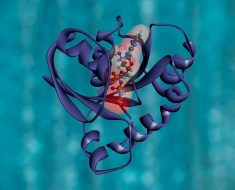A new tool can quickly and reliably identify the presence of Ebola virus in blood samples, according to a study by researchers at Washington University School of Medicine in St. Louis and colleagues at other institutions.
The technology, which uses so-called optical microring resonators, potentially could be developed into a rapid diagnostic test for the deadly Ebola virus disease, which kills up to 89% of infected people. Since it was discovered in 1976, Ebola virus has caused dozens of outbreaks, mostly in central and west Africa. Most notable was an outbreak that began in 2014 and killed more than 11,000 people in Guinea, Sierra Leone and Liberia; in the U.S., the virus caused 11 cases and two deaths. A rapid, early diagnostic could help public health workers track the virus’ spread and implement strategies to limit outbreaks.
The study — which also involved researchers from the University of Michigan, Ann Arbor, and Integrated Biotherapeutics, a biotech company — is published June 8 in Cell Reports Methods.
“Any time you can diagnose an infection earlier, you can allocate health-care resources more efficiently and promote better outcomes for the individual and the community,” said co-first author Abraham Qavi, MD, PhD, a postdoctoral researcher at Washington University. “Using a biomarker of Ebola infection, we’ve shown that we can detect Ebola infection in the crucial early days after infection. A few days makes a big difference in terms of getting people the medical care they need and breaking the cycle of transmission.”
Ebola virus is transmitted by contact with bodily fluids. It causes fever, body aches, diarrhea and bleeding — nonspecific symptoms that easily can be mistaken for other viral infections or for malaria. In recent years, vaccines and effective therapies for Ebola have been developed, but they are not widely available. Instead, health officials control the deadly virus by containing outbreaks. The strategy relies on quickly identifying infected people and preventing transmission by encouraging caregivers to wear protective gear.
Qavi had previously worked with Ryan C. Bailey, PhD, the Robert A. Gregg Professor of Chemistry at the University of Michigan and a co-senior author on this paper, to co-develop optical microring resonators, a kind of whispering gallery mode device used for molecular detection. The name comes from the Whispering Gallery at St. Paul’s Cathedral in London. A whisper uttered on a walkway in the dome above the nave can be heard clearly more than 100 feet away because the sound waves increase in amplitude as they bounce around the circular wall. The 18th century builders accidentally constructed a giant demonstration of the principle of acoustic resonance, in which sound waves increase in amplitude if they interact in precisely the right way. The same phenomenon occurs with light waves on a much smaller scale.
Source: Read Full Article





